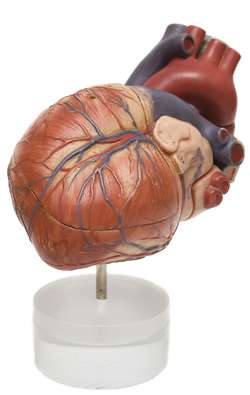Danish researchers predict risk of valvular heart disease

Researchers at the University of Copenhagen, Herlev Hospital and Rigshospitalet have identified a clear link between narrowed heart valves and a special lipoprotein in the blood. In the long term, the research may well help to prevent valvular heart disease. The new findings have just been published in the Journal of the American College of Cardiology.
Aortic valve stenosis (AS) – in which the opening of the aortic valve is narrowed – affects 2-7% of the Danish population aged over 65 years. The disease can be fatal, and the only effective treatment at the moment is valve surgery. The condition can be inherited.
Danish researchers predict risk of valvular heart disease
Researchers at the University of Copenhagen, Herlev Hospital and Rigshospitalet have identified a clear link between narrowed heart valves and a special protein in the blood. In the long term, the research may well help to prevent valvular heart disease. The new findings have just been published in the Journal of the American College of Cardiology.
Aortic valve stenosis (AS) – in which the opening of the aortic valve is narrowed – affects 2-7% of the Danish population aged over 65 years. The disease can be fatal, and the only effective treatment at the moment is valve surgery. The condition is often inherited.
"Based on extensive population surveys, we have shown that high levels of lipoprotein(a) in the blood constitute a significant risk factor for developing aortic stenosis in the general Danish population. Thus, the 10% of the population with the highest levels of lipoprotein(a) in their blood are two to three times more likely to develop the disease simply on these grounds," says Clinical Professor at the University of Copenhagen and consultant at Rigshospitalet, Anne Tybjærg-Hansen.
The researchers have also shown that the risk of developing aortic stenosis is greatest among people born with a special variant of the so-called LPA gene, a gene variation which means increased levels of lipoprotein(a) throughout a person's entire life. Genetic studies in Denmark support previous international research in the area which shows that the LPA gene plays a key role in the development of aortic stenosis.
Better prevention and fewer surgical interventions
The researchers are hoping that the new research findings can be used to help prevent demanding treatments for aortic stenosis in the population:
"In the short term, we are hoping that our research will inspire the pharmaceutical industry to conduct clinical trials which investigate the effect of reducing lipoprotein(a) levels in the body in relation to aortic stenosis and also coronary heart disease – including coronary thrombosis. Previous studies suggest a causal relationship between blood clots and lipoprotein(a)," says Pia Rørbæk Kamstrup, a consultant at Herlev Hospital, adding:
"Preventative treatments targeted at individuals with very high levels of lipoprotein(a) in their blood can hopefully reduce the number of patients requiring valve surgery and the risks always associated with surgical procedures."
The researchers took the Copenhagen General Population Study as their starting point. They had lipoprotein(a) measurements for approx. 29,000 participants, and studied the LPA gene of approx. 77,500 people. The participants were monitored for five years on average, but up to 20 years to monitor the development of aortic stenosis. For following up, the researchers used diagnoses from the Danish National Patient Register (Landspatientregistret) and the Cause of Death Register (Dødsårsagsregistret) as well as operation codes from the Danish Health and Medicines Authority's registers of surgical interventions – including aortic valve surgery.
More information: content.onlinejacc.org/article … px?articleid=1761646















